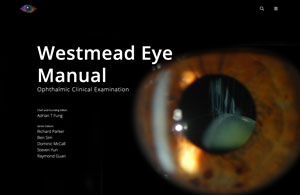26 Lens Management
26.1 Phaco-Vitrectomy
26.2 Pars Plana Lensectomy
26.3 Intraocular Lens Explantation
26.4 Secondary Intraocular Lens Insertion Clinical Scenarios & Clinical Decision Making
26.5 Sulcus Intraocular Lens
26.6 Anterior Chamber Intraocular Lens
26.7 Iris Fixated Intraocular Lenses
26.8.1 Scleral Sutured Intraocular Lens – Traditional 2 Point Fixation
26.8.2 Scleral Sutured Posterior Chamber Intraocular Lens 4 Point Fixation
26.8.3 Scleral Sutured Posterior Chamber Intraocular Lens – “Hoffman” Corneoscleral Pockets
26.8.4 Alternate Technique to Rescue a Dislocated IOL – Triangular Scleral Flap, Sutured IOL Technique
26.8.5 Suturing Without Exchanging the Intraocular Lens
26.9 Sutureless Scleral Fixation of an Intraocular Lens
26.2 Pars Plana Lensectomy
Pars plana lensectomy may be required in the following scenarios
- Significant phacodonesis: An extremely unstable lens with zonular dehiscence (e.g. ectopia lentis). In this case, a planned pars plana lensectomy may be more appropriate than attempting phacoemulsification. Phacodonesis may also be seen in the setting of trauma and in vitreoretinal cases where a tamponade is needed, an unstable crystalline lens may cause lens iris diaphragm issues and may need to be removed concurrently.
- Complicated phacoemulsification with rupture of the posterior capsule and vitreous prolapse.
- Retinal surgery when a cataract is impairing visualization of the fundus. Note that in most cases phacoemulsification is preferred, either as a separate operation or as a combined procedure.
- Surgery for proliferative vitreoretinopathy (PVR) retinal detachment. Removal of the lens often allows closer shaving of the peripheral vitreous and potential prevention of anterior PVR. Note that in most cases phacoemulsification is preferred.
Crystalline lens dislocation (e.g. traumatic cataract) or complicated phacoemulsification with a dropped nucleus.
Infusion Cannula
- The infusion cannula should be visualized in the vitreous cavity prior to being switched on.
- If intravitreal visualization of the infusion cannula is not possible due to a dense cataract, consider placing an anterior chamber infusion line first.
Vitrectomy
Always perform vitrectomy first to relieve any vitreous traction from around the lens. It is preferable for lens pieces to fall back than for them to be aggressively removed with high aspiration while vitreous is still present. Ensure that the posterior hyaloid is elevated if a PVD is not present.
Pars Plana Lensectomy
The lens can be removed by the:
Vitrector Cutter (Figures 26.2.1)
This is only possible if the lens material is soft enough to be removed by the cutter. It is also easier with larger gauge (e.g. 23-gauge systems). Reduce the cut rate. For lens pieces that have fallen to the retinal surface, aspirate (“cutter off”) them into the cutter port, before bringing the pieces into the mid-vitreous (where it is safer to maneuver), then turn the cutter back on to remove the piece.
Maintaining aspiration at all times reduces the chance of “dropping” the lens piece. Use the tip of the light pipe to help “mash” the lens pieces into the cutter. If the cutter seems to be lacking purchase, clear the mouth on a high cut rate. Sometimes the cutter will become blocked with lens fragments. If this occurs, disconnect the aspiration line and flush balanced salt solution back through the cutter. Another option is to switch back to a high cut rate, step on the pedal to clear the line, then go back to the dense vitrectomy setting to continue the lensectomy.
Fragmatome
Denser cataracts require removal with a fragmatome (Figure 26.2.2). Vitrectomy should be completed prior to the use of the fragmatome as engagement of any residual vitreous can cause significant vitreoretinal traction and potential tears. One can either enlarge one of the existing sclerotomies (preferable) or create a new adjacent sclerotomy. After opening the conjunctiva and achieving good hemostasis of the sclera and conjunctiva with external cautery a 20-gauge sclerotomy should be created with an MVR blade. If using a small gauge infusion line (e.g. 23- or 25-gauge), increase the IOP to avoid overwhelming the infusion with the 19-gauge fragmatome. If the anterior capsule is still intact, attempt to preserve it whilst removing retained lens with the fragmatome and/or vitrectomy cutter. This allows for the potential placement of a sulcus IOL. If the nucleus has dropped posteriorly, aspirate the pieces into the mid-vitreous (where it is safer to work) before initiating the fragmatome. Try to keep the tip of the fragmatome engaged in a lens piece and use the tip of the light pipe to help “mash” the lens pieces into the fragmatome. Ideally, dropping of lens fragments back onto the retinal surface should be avoided, as repeated return of the fragmatome probe to the retina raises the risk for iatrogenic retinal injury. Upon completion of the lensectomy, any capsule that is insufficient for a sulcus IOL can be removed with the vitreous cutter.
Previous
26.1 Phaco-Vitrectomy
All rights reserved. No part of this publication which includes all images and diagrams may be reproduced, distributed, or transmitted in any form or by any means, including photocopying, recording, or other electronic or mechanical methods, without the prior written permission of the authors, except in the case of brief quotations embodied in critical reviews and certain other noncommercial uses permitted by copyright law.
Westmead Eye Manual
This invaluable open-source textbook for eye care professionals summarises the steps ophthalmologists need to perform when examining a patient.

